We may receive a commission when you use our affiliate links. However, this does not impact our recommendations.
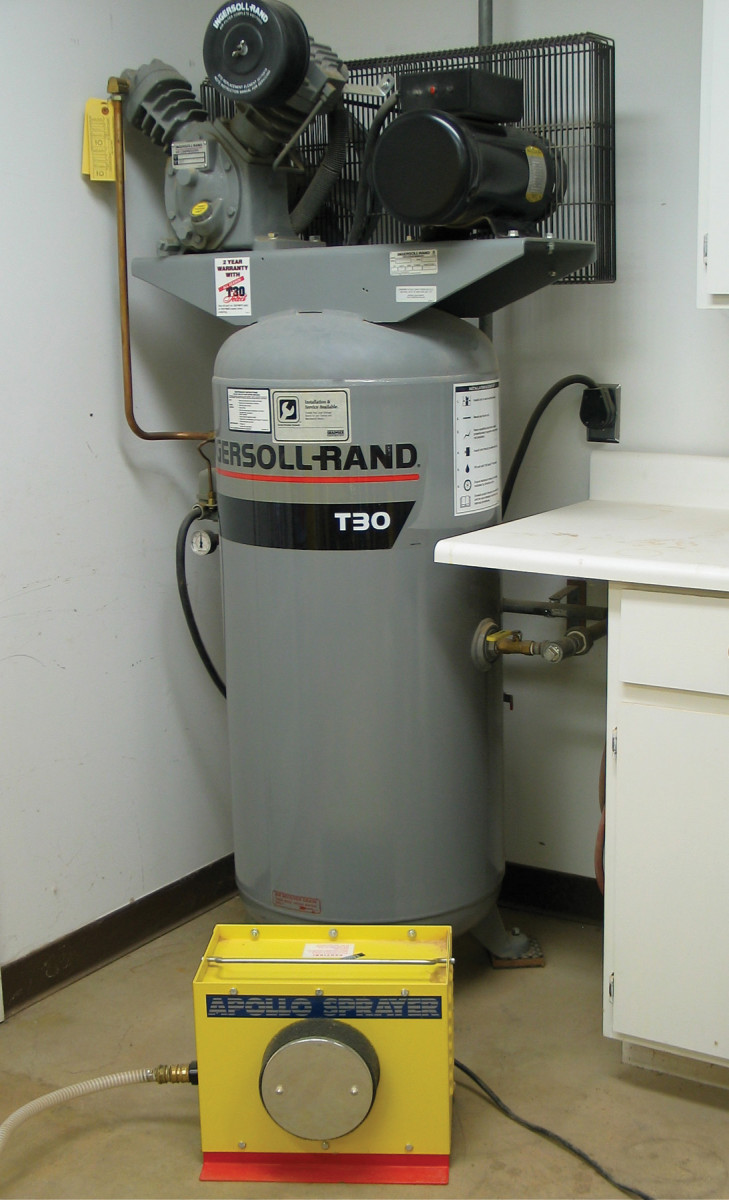
1. The two primary sources of air for a spray gun are a compressor and a turbine. Besides size, the key difference is how much air pressure each produces.
How to choose a spray gun.
A spray gun is a tool that turns a stain, paint, finish or other liquid material into a fine mist—a process called “atomization.” It then propels the liquid onto a work object. Spray guns vary in type and quality, but each is designed to produce the finest atomization possible for the money in order to create a minimum of orange peel (a three-dimensional effect caused by the fine mist not totally flattening out on the surface).
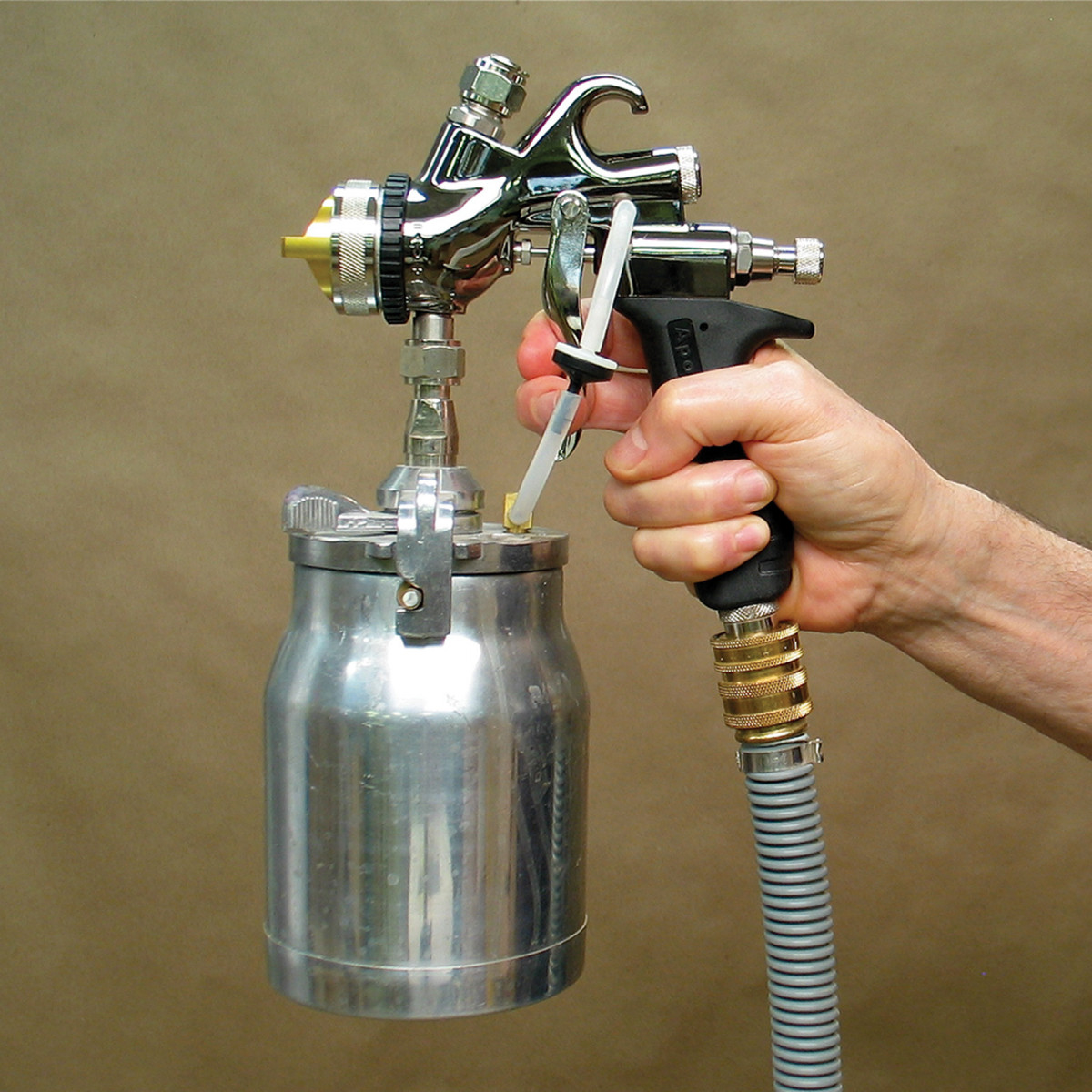
2-4. The three primary spray-gun configurations are a cup under the gun, a cup on top of the gun and a separate pressure pot that’s attached to the gun by a hose. The first and second configurations can be powered by a compressor or a turbine. The pressure pot for the third has to be powered by compressed air.
All spray guns will spray all stains, paints and finishes, and all stains, paints and finishes can be sprayed through all spray guns. The quality of atomization produced by any spray gun can be improved up to the capable limit of that gun by increasing air pressure, thinning the liquid, or both. (It takes less air pressure to atomize a thin liquid and more air pressure to atomize a thick liquid.) Generally, the more expensive the gun within each spray-gun type, the better the gun is capable of atomizing.
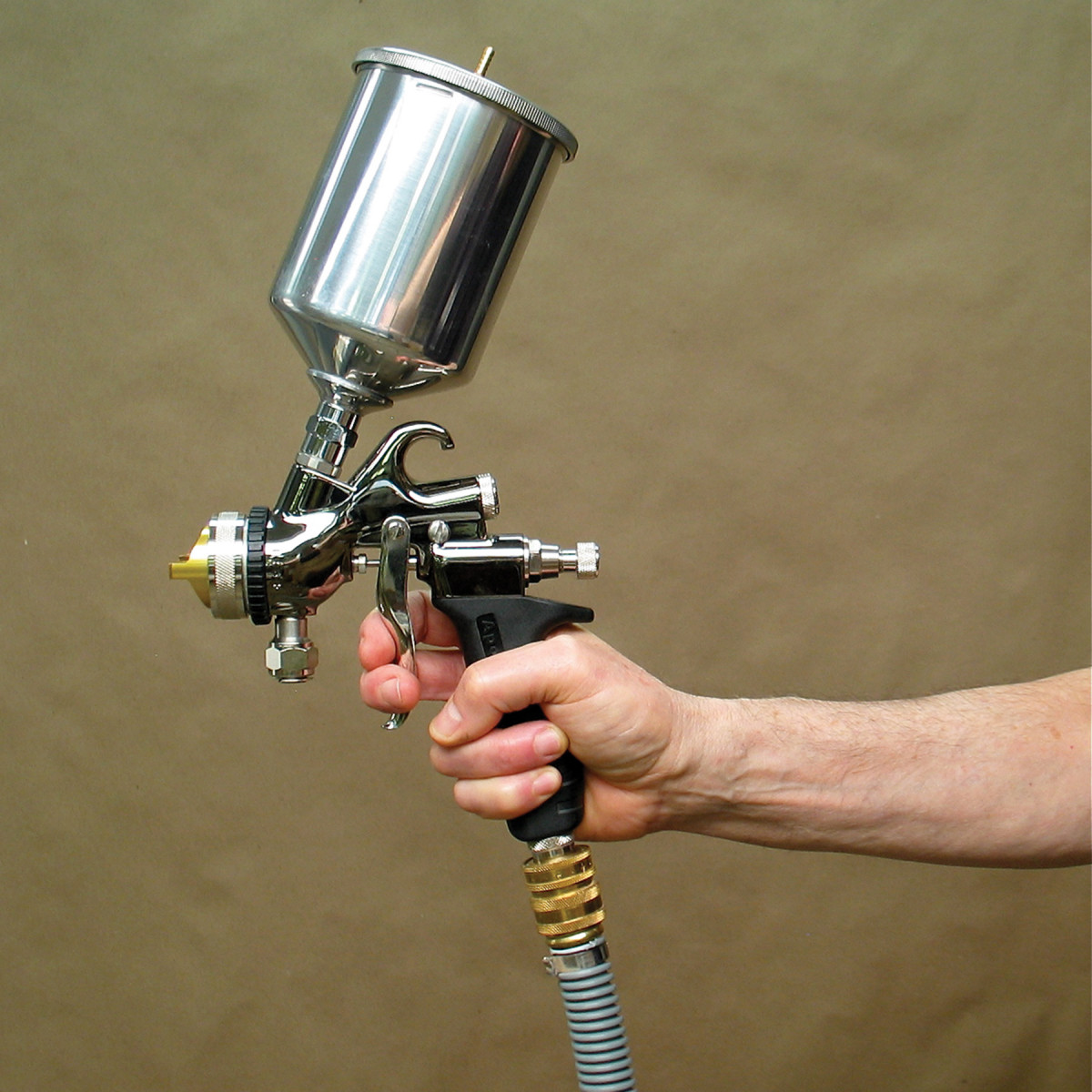 Compared to rags and brushes (the other common tools used to apply stains, paints and finishes), spray guns transfer the liquid faster and leave a more level surface, but they cost a lot more and create more waste because of overspray and bounce back (the spray bouncing back off the surface). This waste has to be exhausted for health reasons and to keep it from settling back on the work. The equipment for accomplishing this adds to the cost.
Compared to rags and brushes (the other common tools used to apply stains, paints and finishes), spray guns transfer the liquid faster and leave a more level surface, but they cost a lot more and create more waste because of overspray and bounce back (the spray bouncing back off the surface). This waste has to be exhausted for health reasons and to keep it from settling back on the work. The equipment for accomplishing this adds to the cost.
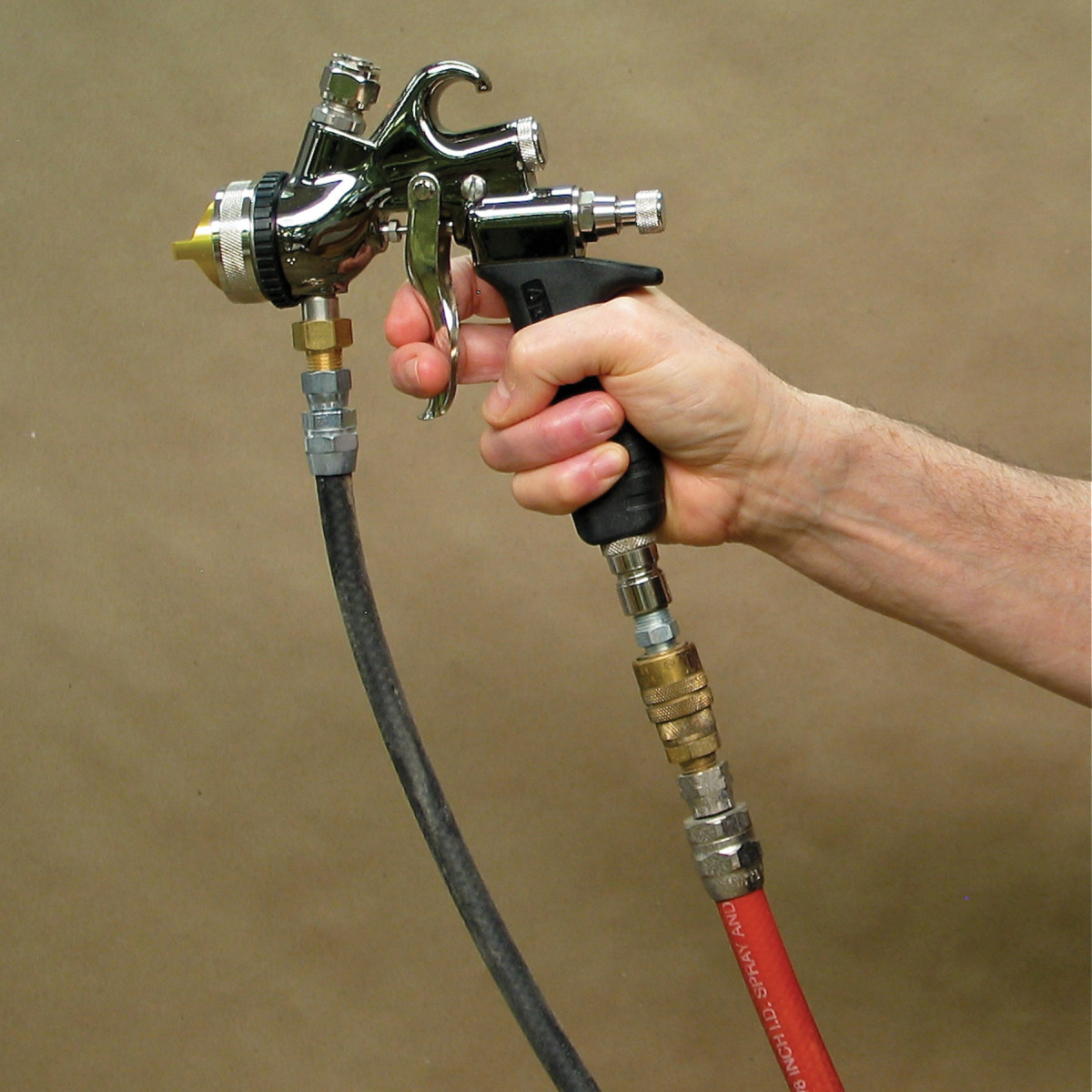 Nevertheless, the increase in speed and degree of levelness make a spray gun an essential tool for production situations and a definite aid in non-production situations.
Nevertheless, the increase in speed and degree of levelness make a spray gun an essential tool for production situations and a definite aid in non-production situations.
Compressor or Turbine
There are five large categories of spray guns:
- Conventional—operated off of compressed air from a compressor.
- Conversion HVLP—operated off of compressed air from a compressor.
- Turbine HVLP—operated off of air from a turbine.
- Airless—operated off of a high-pressure pump.
- Air-assisted airless—operated off of both compressed air and a high-pressure pump, it produces a more orange-peel-free surface than the airless alone.
Airless spray guns are commonly used by painters for coating large surfaces such as buildings. Air-assisted airless spray guns are commonly used in factories and large production shops and are quite expensive. So I’ll limit this discussion to the first three types used by most amateurs and small professional shops.
Each of these types work by using air to turn a liquid stream of fluid into a mist, a process that is called atomizing. There are two sources of air: compressors and turbines. Compressors produce air under high pressure. Turbines produce high volumes of air under low pressure. Both can be used to power HVLP (high-volume-low-pressure) spray guns.
The way compressed-air HVLP spray guns do this is by pinching the air coming through the gun so that the pressure is greatly reduced when the passage is opened up again.
Both of these types came on the market 30-to-40 years ago and are now so widely used because of the softer spray they produce that it’s now difficult to find the older high-pressure spray guns except on the used market.
So if you’re thinking of buying a spray gun how do you choose which one to get?
You have three choices to make: the type you want (conventional, conversion HVLP or turbine HVLP); how much you’re willing to pay; and the brand.
Type
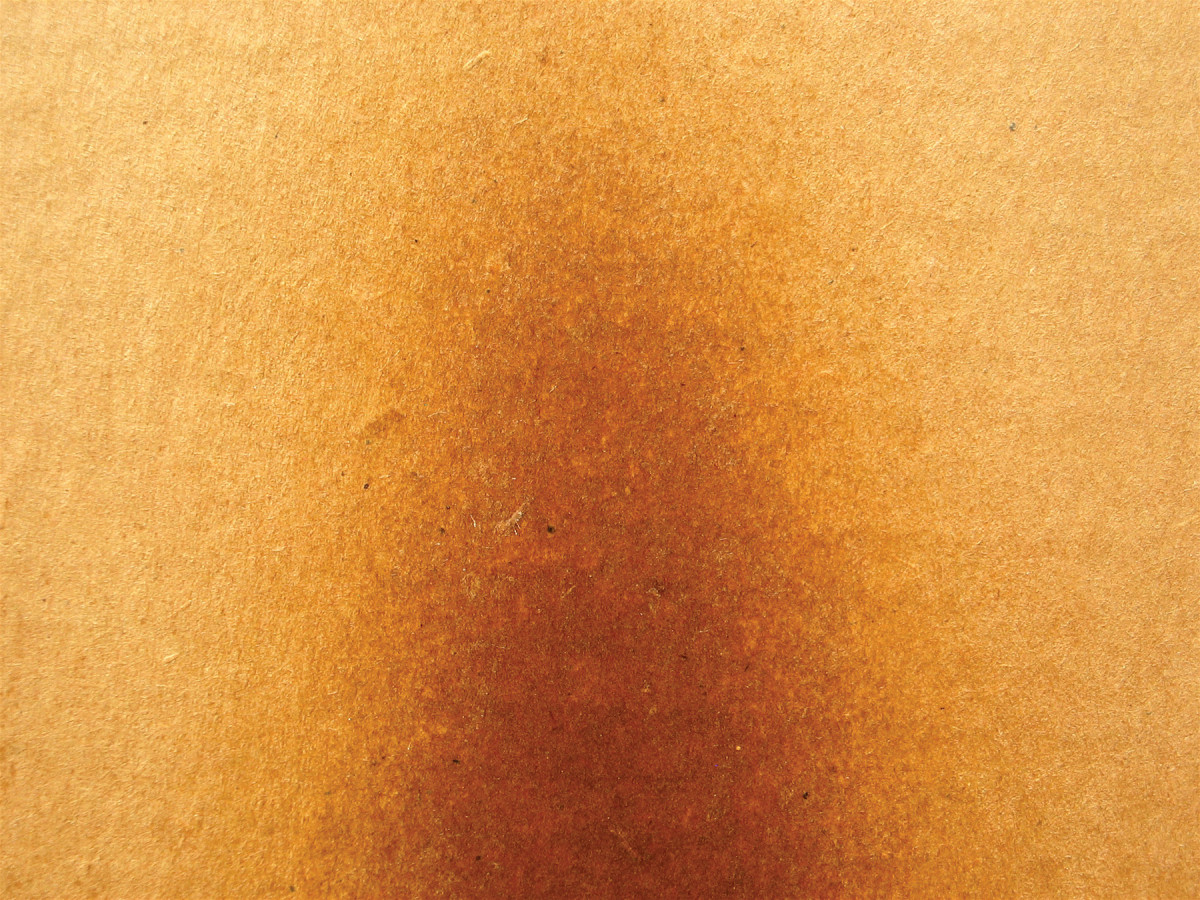
5-6. The way to judge the quality of atomization you’re getting is to spray a short burst of finish onto cardboard or brown paper and look at the edges of the pattern. How big are the dots? The picture on the left shows good atomization. The picture on the right shows poor atomization.
If you already have a compressor large enough to operate a conversion spray gun, or if you intend to buy a compressor for other uses, such as running pneumatic tools, then you should buy a conversion HVLP spray gun. These guns will cost you $200 or more, but you’ll get the highest quality results and this will be your total expense except for exhaust.
 If you don’t already own a compressor, have no other need for one, and don’t expect to be doing production work, you should buy a turbine HVLP system. Your total expense will be less and you’ll get excellent results. Turbine HVLP is the way to go for most amateurs and small woodworking-shop professionals.
If you don’t already own a compressor, have no other need for one, and don’t expect to be doing production work, you should buy a turbine HVLP system. Your total expense will be less and you’ll get excellent results. Turbine HVLP is the way to go for most amateurs and small woodworking-shop professionals.
Another advantage of turbine HVLP systems is easy portability so many painters who do their painting on site buy this system.
Cost
Buying a spray gun or spray system is similar to buying a table saw. With a table saw, the more you pay the better the durability (you can operate it for longer periods of time without it wearing out) and the more accurate the settings. With a spray gun, the more you pay, the better the durability and the better the atomization. You should always buy the best quality (most expensive) you can afford.
Brand
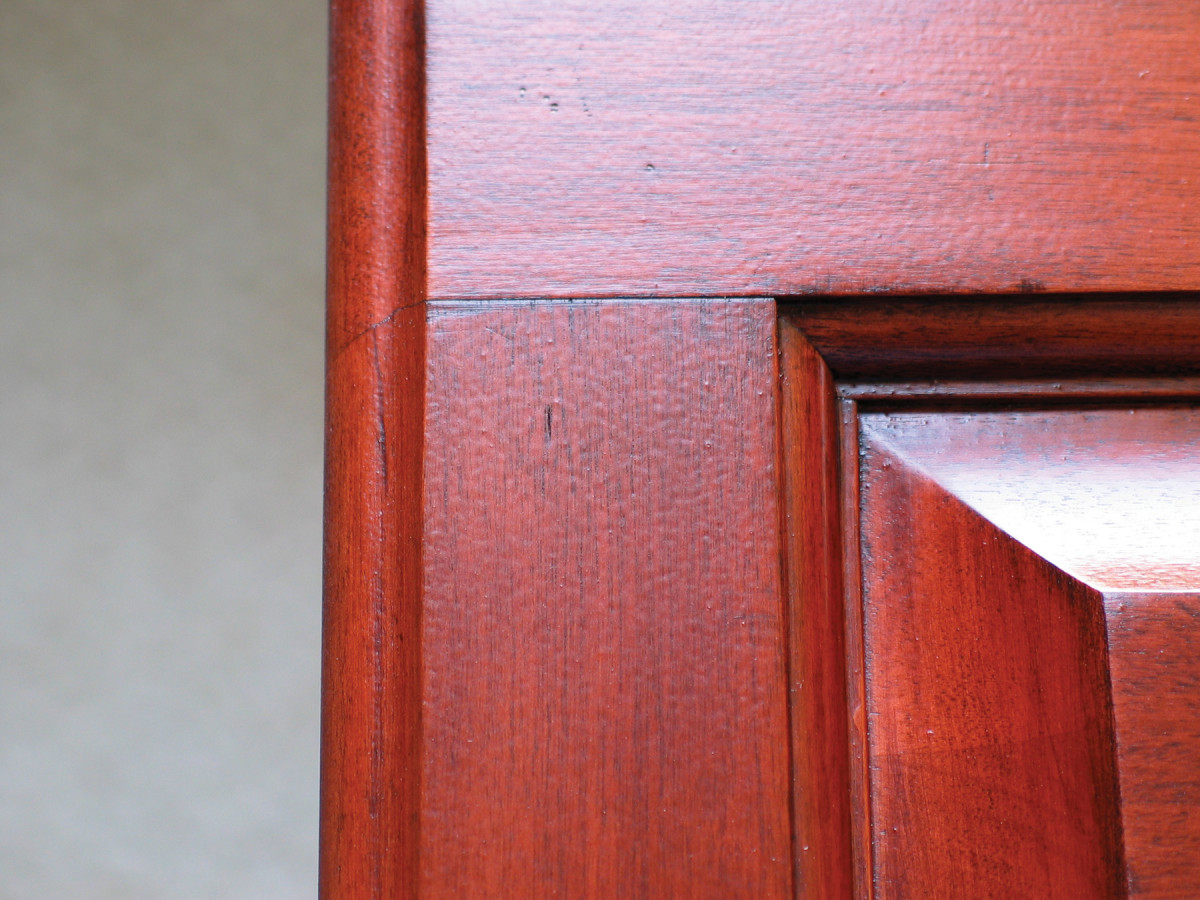
7. Poor atomization leads to increased orange peel because the finish has more difficulty flattening out.
There is a lot of competition among companies, so you usually get what you pay for no matter which brand you choose.
The most important difference among brands is availability of service. If anything should go wrong with your spray gun you want to be able to get it fixed. You may also want extra parts, like various sizes of needles, nozzles and air caps or you may want the spray gun rebuilt after a number of years of use.
Service is usually provided by the distributor and not by the manufacturer so you should look for a distributor in your area that provides service. If you decide to buy by mail order, do the same. Find a mail-order company that will take care of you.
Beyond these three considerations, you may look for special features, but most spray guns of equivalent price are very close to the same in features.
Here are some supplies and tools we find essential in our everyday work around the shop. We may receive a commission from sales referred by our links; however, we have carefully selected these products for their usefulness and quality.








